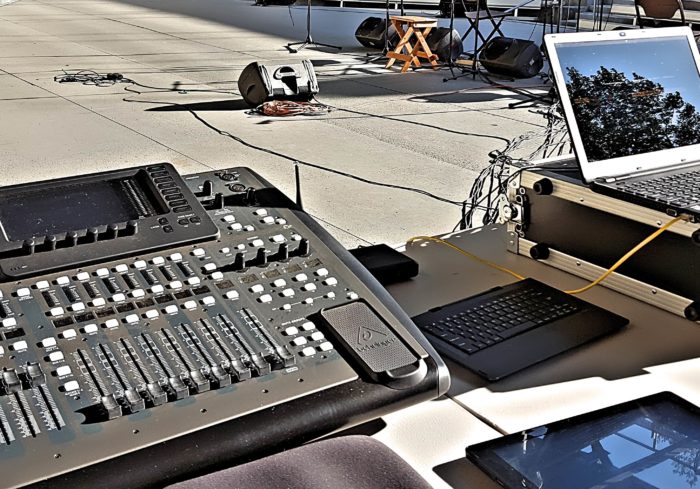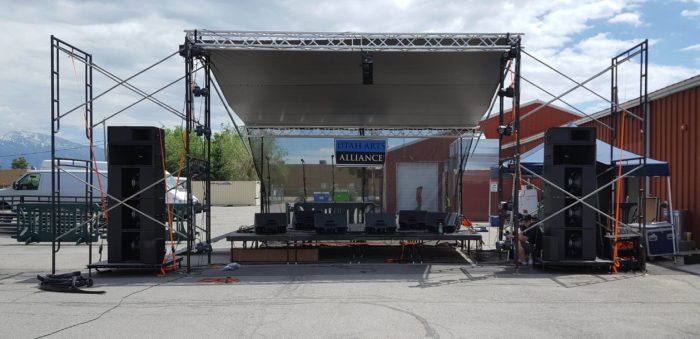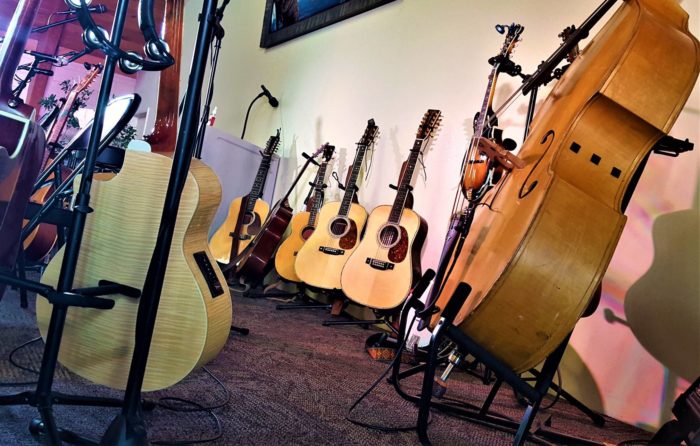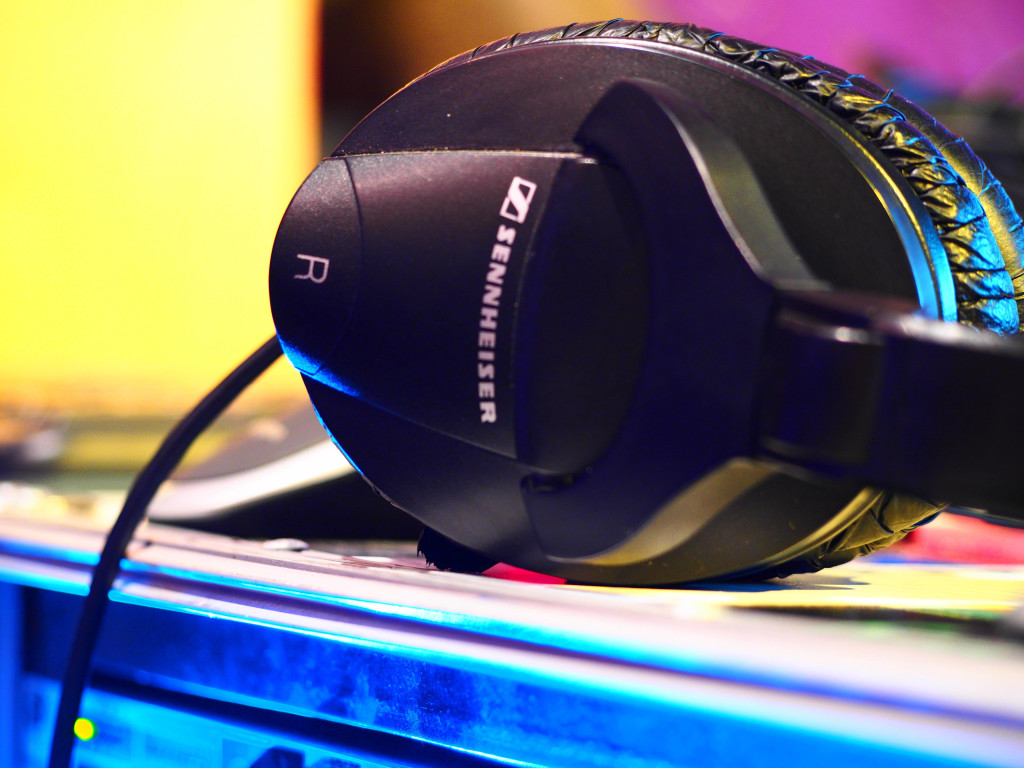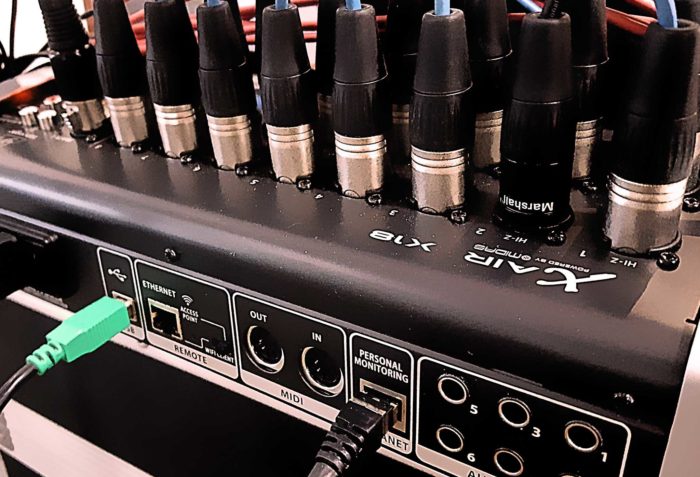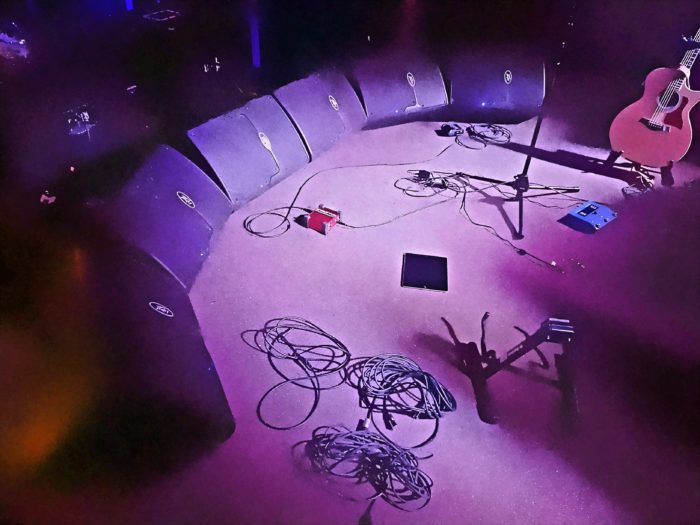We already had a solution, why waste it?
Please Remember:
The opinions expressed are mine only. These opinions do not necessarily reflect anybody else’s opinions. I do not own, operate, manage, or represent any band, venue, or company that I talk about, unless explicitly noted.

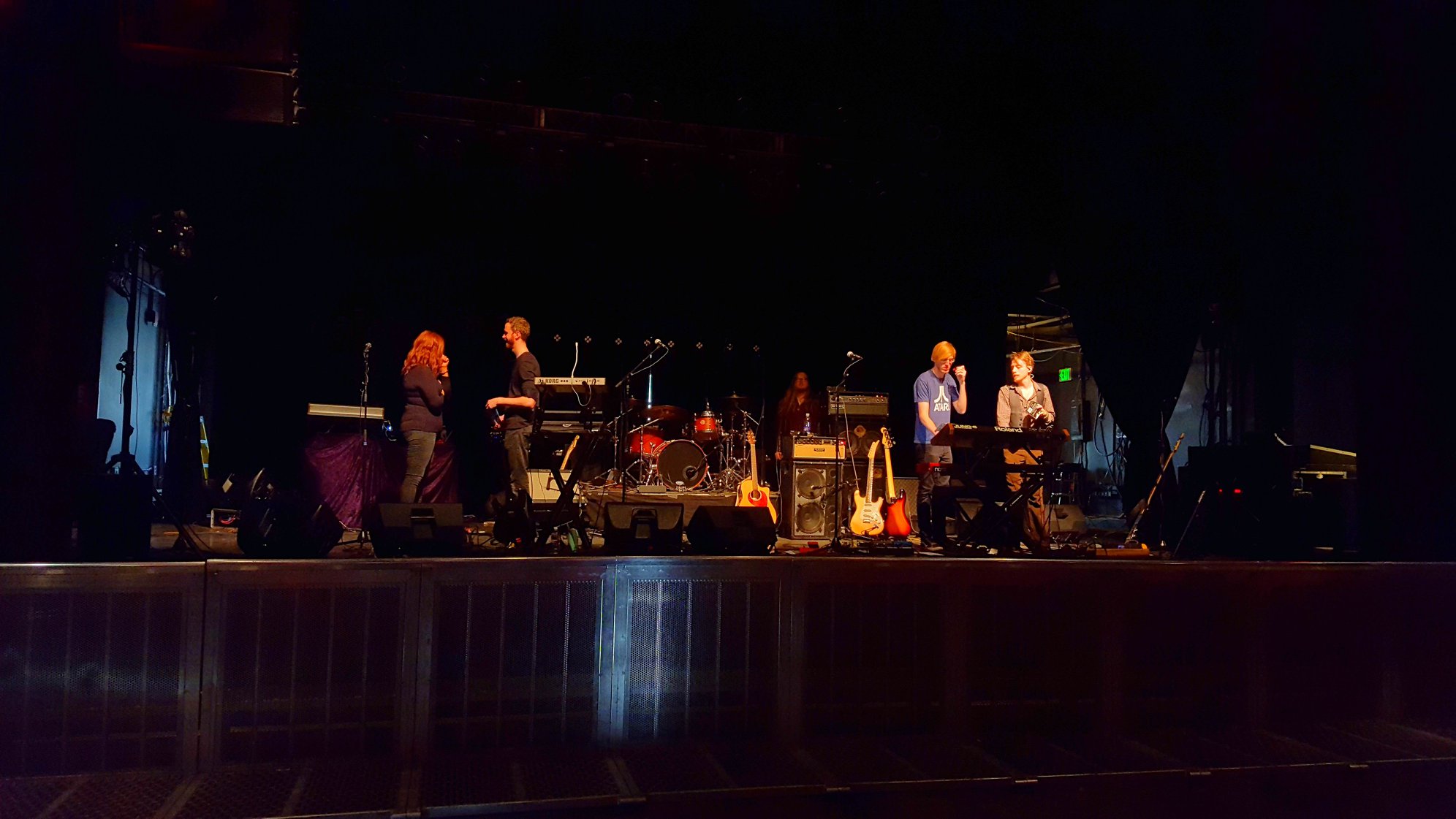 Want to use this image for something else? Great! Click it for the link to a high-res or resolution-independent version.
Want to use this image for something else? Great! Click it for the link to a high-res or resolution-independent version.I have plenty to say about a recent foray into a decidedly NOT small venue. Pigs Over The Horizon got booked into The Depot for a night of Pink Floyd madness, and it was astoundingly fun. (That the place was full certainly helped.) I thought I’d start with an absolutely critical piece of the show’s success: Monitor world.
The captain of monitor beach for Pigs is Jason Knoell, not me. As I’ve said before, my job when it comes to Jason is to provide a good starting point. After that, getting out of the way is my major calling.
Now, The Depot is home to a significant collection of EAW JFX260 monitors. We didn’t use any of them. Instead, we brought in our own solution of Yamaha DBR12s and Alto TS312s for most onstage noises, with a “Frankensteined” drumfill of Turbosound subs and JBL Eon tops.
Why? Why forgo some “pro-touring” grade boxes for units you can buy at Guitar Center for a few hundred smackers a piece? Well, it comes down to two things, really:
1. We had a solution already.
I’ll talk more about the specifics of the solution at a later time, but this was the major driver behind my decision. We had a good two days of tech rehearsal before the show, and for me, the best use of that time was to get an onstage solution dialed up. That way, we would be as far along as possible once we got into the real venue; Not starting from scratch, in other words. Jason could recall his monitor mix, and it would be mostly correct. Some tweaks might be necessary due to a transfer into a different acoustical environment. That’s an inescapable thing…but a 100% escapable thing is changing over to different boxes.
Don’t get me wrong, here. I have tons of confidence that an EAW monitor is a well-behaved, easily tuned loudspeaker enclosure. The point is that I knew that what we already had was working exactly as people wanted. I also knew that we wanted to spend the absolute minimum time in the venue “fiddling.” Moving to a different box would likely be a step backward in both respects. We could certainly have a chance at getting lucky and not having any issues, but luck is not how complex shows end up coming off well.
2. The improvement from the EAWs would only have been marginal.
We’re at a point now where internal powering and processing makes affordable loudspeakers pretty darn good. Would the EAWs have gotten louder? Maybe, but likely only by a couple of dB – and we weren’t running anything into its limiters anyway. As such, more level would have been a moot point. Would a JFX260 have sounded better? Again…maybe? Or maybe not, depending on the preferences of the musicians. The Altos and Yammies are tuned well enough out of the box that running them flat and getting good results isn’t a struggle. I don’t think Jason had to fight their transfer functions at any point. It’s not like we were having trouble with unruly monitors, where an EAW would have made an ocean of difference. The potential upgrade would have been minor, and mostly aesthetic, and nobody was complaining anyway.
When you add it all up, moving to the in-house monitor wedges would have been mostly an “on-paper” upgrade of questionable effectiveness. JFX260 enclosures are certainly classier than what we brought in, but going with what we knew and had dialed up to our precise specifications was (in my mind) the smart play.
